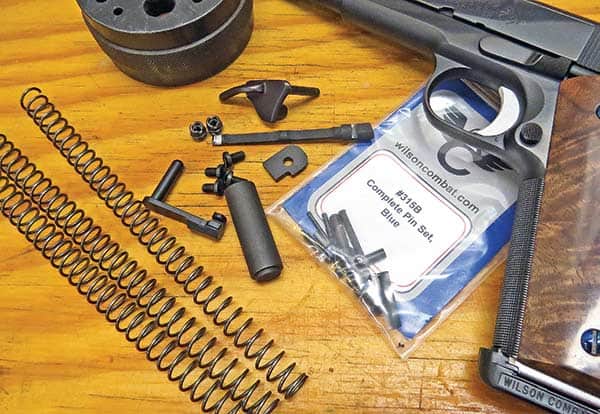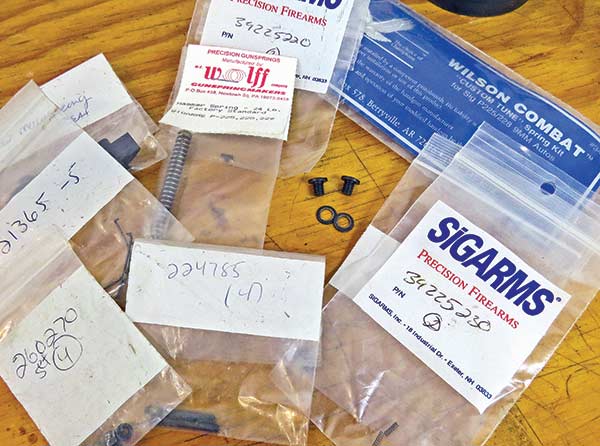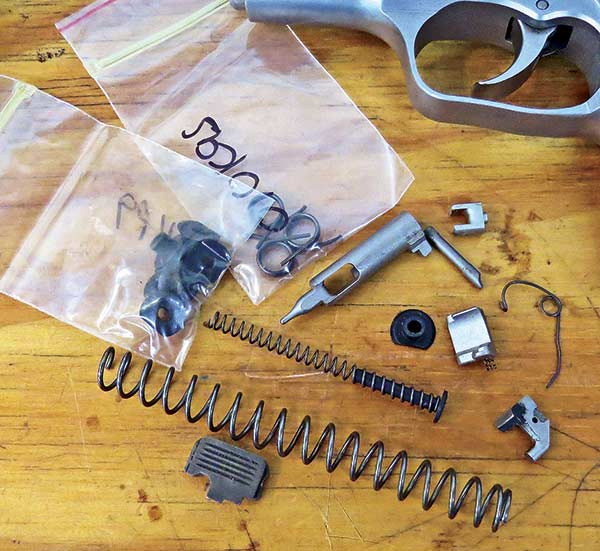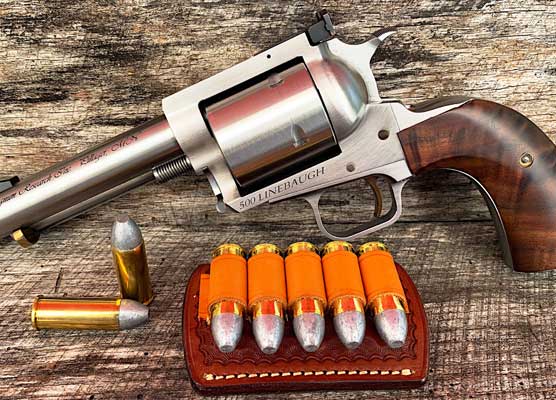Building Your Spare Parts Kit
It’s in all our best interests to become familiar with field- and detail-stripping any handgun in our battery, regardless of type. Once we’re comfortable with that, we can make some decisions on a spare parts complement. The first consideration should be which parts will you conceivably need in the future? Some pistols are easier than others to set up a parts kit, some will require thought, or maybe even a little research.
One thing’s for sure — very few things can prove to be as expensive, dollar for dollar, than a cheap part. So buy good stuff. By good, I mean OEM factory replacement parts should be considered the bare minimum quality standard. Upgrade or custom parts are also a viable option, but most will have to be installed and fit either by a competent gun owner or a pistolsmith. Also, buy the right stuff. Having a replacement part incorrect for your model pistol isn’t just frustrating, it can be dangerous as well.
Finally, buy enough stuff! A spare extractor and recoil spring can’t become a fix for a broken slide stop. If you’re going to set yourself up with spares, you may as well have a full set.
The 1911
There are many who believe that “fill in the blank” pistols never fail, so don’t require parts replacements. I’ve been told revolvers need no spares because they’re so simple. My years at Gunsite taught me anything can break, and at any time. Often things break for no reason, or for a reason not making any sense at all. They just break. There are also many who believe the best fix is another gun. I agree completely, but at some point you’re going to have to fix gun number one.
As a fan of the 1911 I’ve found a spares complement isn’t too difficult or expensive. In addition to the common sense articles like recoil springs, grip screws and a magazine or two, here are some suggestions for a well rounded kit.
First, a good quality pin set, spare recoil springs and an extra recoil spring plug. This takes care of things most often launched into space or dropped into the dirt. A slide stop and thumb safety are also handy to have, but these should be pre-fit and function-tested. An extra extractor, properly fit, tuned and polished is an important asset to have. At best case, have a quality aftermarket extractor installed and tuned, and keep your original as the spare.
Depending on your level of technical expertise and availability of tools, you can expand your kit to include a spare pre-fit firing pin stop, action components, and stock bushings. A failure not covered by this kit would likely require a trip to the bench anyway. All told, a workable spare parts complement for a 1911 will fit into a small ziploc bag — no need for a spare range bag just for the parts! Again, make sure as you get the right stuff. Some Series 70 and 80 parts differ, and are not interchangeable.
Revolvers And Other Autos
The service pistols — Glocks, SIG’s and the like — are pretty straightforward in terms of needed spares. Even though the list of parts may be shorter and their replacement simpler, there are some details which can’t be overlooked. Most of these types of pistols undergo model changes and upgrades translating into many different variations between parts. You have to make sure you’ve got the correct part for your model/generation/vintage.
This is where buying directly from the factory can help immensely, as referencing your order by model and serial number can help eliminate the guesswork on your end. Requirements will vary, but in most cases, the following will make up a pretty well-rounded spares complement for a service pistol: extractor with spring/plunger/pin (as applicable), recoil spring (assembly), grip screws, slide stop, trigger/locking block pins and trigger return spring (if applicable).
For revolvers, things get pretty simple, because revolvers are simple. I’ve only broken parts on two revolvers in use — both carried while hunting, both were rear sight related — and both would have been easy fixes with spare rear sight assemblies. Just to be on the safe side, rear sight, sideplate screws, thumb piece and nut, and cylinder base pin lock parts would be good to have handy.
Experience is still the best teacher, and breaking, losing, or simply wearing out parts will be your best indicator of which spares you should carry. One thing’s for sure — the old saying “Better to have and not need, than to need and not have” still rings true.






